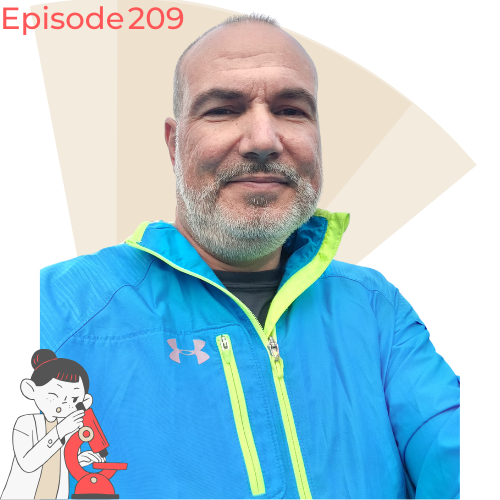What to Expect:
In this episode, Dimos Katsis shares his journey from joining a solar car team in college to becoming the director of power electronics at Power America. Dimos provides a deep dive into wide band gap semiconductor technology and its transformative impact on electric vehicles, aerospace, and beyond.
About the Guest:
Dimos Katsis
Dimos Katsis is the director of power electronics at Power America. With decades of experience in power electronics, he has been instrumental in advancing wide band gap semiconductor technology, which plays a crucial role in electric vehicles, aerospace, and other high-tech industries. His work involves collaborating with industry leaders and researchers to drive innovation in power electronics.

🌟 Key Takeaways from This Episode:
- Wide Band Gap Semiconductors: Revolutionizing power electronics for electric vehicles and aerospace applications.
- Career Journey: From early involvement in solar car teams to leading research at Power America.
- Future of Power Electronics: The potential of silicon carbide and gallium nitride in transforming various industries.
🔬 In This Episode, We Cover:
Dimos’s Research :
Dimos’s work focuses on advancing wide band gap semiconductor technology, particularly silicon carbide and gallium nitride, for applications in electric vehicles and aerospace. These materials offer superior performance compared to traditional silicon, enabling more efficient and reliable power electronics.
Dimos’s Career Journey :
Dimos’s career began with his involvement in a solar car team during college, where he worked with NASA-developed solar energy harvesters. This experience sparked his interest in power electronics and led him to pursue a career in this field. Over the years, he has worked with various organizations, including General Electric and Blue Origin, before joining Power America.
Consortiums and Collaboration:
Dimos discusses the importance of consortiums like Power America, which bring together industry leaders and researchers to share knowledge and advance technology. These collaborations are essential for driving innovation and ensuring the development of cutting-edge power electronics.
Life as a Scientist- Beyond the Lab :
Dimos values the collaborative nature of scientific research and enjoys engaging with the global scientific community. He is passionate about teaching and mentoring the next generation of scientists.
Dimos’s 3 Wishes
- Increased funding for basic research: Dimos emphasizes the need for more financial support to advance fundamental research that can lead to groundbreaking discoveries.
- Forward-thinking investments: He advocates for investments in technologies and infrastructure that can benefit future generations.
- Bridging the gap between scientists and the public: Dimos believes in the importance of improving the relationship between the scientific community and the general public to foster better understanding and support for scientific advancements.
Dimos’s Time on @RealSci_Nano :
Dimos will be taking over the RealSci_Nano Twitter account to share his research on wide band gap semiconductors and their applications. Followers can expect to learn about the innovative techniques and materials his work focuses on, as well as insights into the future of power electronics.
Join the Conversation
Follow & listen to “Under the Microscope” on Spotify, Apple Podcasts, Castbox, Amazon Music, Goodpods.
Got your own favourite podcast app? Follow the RSS link to find Under the Microscope.
Watch the video of all Under the Microscope episodes on The Science Talk’s YouTube channel. While you are at it, make sure to subscribe to our YouTube Channel.
Learn more about Under the Microscope – https://thesciencetalk.com/under-the-microscope/
Love what we do? Support us:
We also offer partnerships to scientists, research institutions, industry, funding bodies & societies.
Get in touch to start the conversation.
